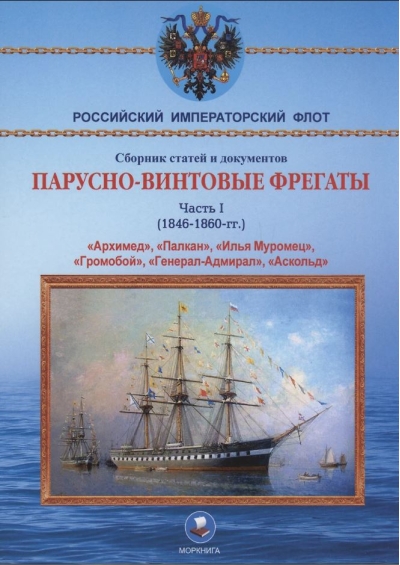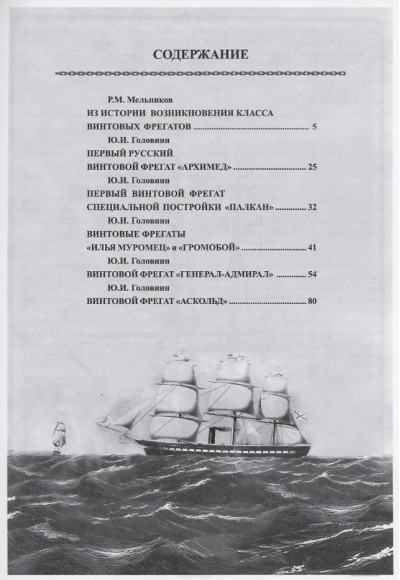Screw-sail frigates. Part I. 1846-1860.
19.99 €
The only thing available 2
The appearance of the class of screw frigates was one of the manifestations of the scientific and technical revolution of the first quarter of the XIX century. Occupying for centuries the second place in the hierarchy of warships, frigates, having received bomb cannons and propeller, by the end of the first half of the XIX century began to come out on top, relegating battleships to the background.
With the advent of bomb guns, it became clear that the destruction of a wooden ship does not require the number of guns that armed battleships. No less important factor was the use of a steam engine in military shipbuilding, which led to the emergence of a new class of ships - steamboat frigates, which by the beginning of the second quarter of the XIX century occupied a special position in the fleets of the world. But soon the use of a propeller instead of bulky, vulnerable in battle heavy propellers finally outweighed the scales in favor of frigates.
The above advantages of the frigates were first evaluated in the US Navy. It was the Americans who began to build ships that surpassed the corresponding European ones in speed and caliber of guns.
In Russia, departing from his previous order to build five military steamers, Emperor Nicholas I ordered to limit the construction of only four, and instead of the fifth in January 1846 ordered to lay a frigate of the type "Pallada", which was later decided to be converted into a screw. Under the name "Archimedes" in 1849 it became part of the Russian Navy. If the first after the "Archimedes" frigate "Palkan" almost repeated its type, having almost the same displacement - 2300 tons, the next two new frigates had increased to 3200 tons displacement and armament of domestic 60-pound bomb guns developed by that time, which could shoot nuclei, bombs and shotguns. Foreign schools of shipbuilding in the Russian fleet represented frigates: 70-gun "General-Admiral" and 40-gun "Svetlana", built in 1858.
These first six ships became the founders of the type of ships - sailing-prop frigates.
With the advent of bomb guns, it became clear that the destruction of a wooden ship does not require the number of guns that armed battleships. No less important factor was the use of a steam engine in military shipbuilding, which led to the emergence of a new class of ships - steamboat frigates, which by the beginning of the second quarter of the XIX century occupied a special position in the fleets of the world. But soon the use of a propeller instead of bulky, vulnerable in battle heavy propellers finally outweighed the scales in favor of frigates.
The above advantages of the frigates were first evaluated in the US Navy. It was the Americans who began to build ships that surpassed the corresponding European ones in speed and caliber of guns.
In Russia, departing from his previous order to build five military steamers, Emperor Nicholas I ordered to limit the construction of only four, and instead of the fifth in January 1846 ordered to lay a frigate of the type "Pallada", which was later decided to be converted into a screw. Under the name "Archimedes" in 1849 it became part of the Russian Navy. If the first after the "Archimedes" frigate "Palkan" almost repeated its type, having almost the same displacement - 2300 tons, the next two new frigates had increased to 3200 tons displacement and armament of domestic 60-pound bomb guns developed by that time, which could shoot nuclei, bombs and shotguns. Foreign schools of shipbuilding in the Russian fleet represented frigates: 70-gun "General-Admiral" and 40-gun "Svetlana", built in 1858.
These first six ships became the founders of the type of ships - sailing-prop frigates.
See also:
- All books by the publisher
- All books in the series Russian Imperial Navy











